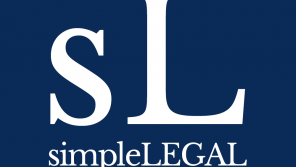Read a blog post, article, essay, tweet, or almost anything else covering the practice of law and you will see the word “new” usually followed by “law.” The practice of law has changed, is changing, and will continue to change. New Law includes alternative service providers, new types of law firms, new billing models, and new ways to measure performance. Read further in many of these posts, articles, and essays and there is a pause, a sigh, and a literary shoulder shrug. The author notes with resignation that there isn’t much new in legal education.
Law schools, like their large law firm cousins, do not leap in new directions. But there are some exciting things happening in the schools. Stanford (CodeX), Georgetown (Iron Tech Lawyer), Suffolk (Institute on Law Practice Technology and Innovation) and Chicago-Kent (Center for Access to Justice and Technology) have programs that bring “new” into the classroom.
Michigan State University’s College of Law, where I am an adjunct professor, is another one of those law schools that has added innovative New Law courses to its curriculum. At the Law College we have The Center for Legal Services Innovation, known as theLegalRnD program. Let me give you a peek into the program by telling you about one course I teach, Delivering Legal Services: New Legal Landscape.
Why I Teach Delivering Legal Services
The course started from a simple premise: if lawyers want to give clients at all levels of the economic spectrum affordable, efficient, high quality legal services, we have to teach lawyers how to do so and the best place to start that education is while they are in law school. In other words, if we want to fix the supply chain it is best to start at the beginning.
This Isn’t Your Grandfather’s Law School Course
We have some great courses at the Law College, but as befits a New Law course, Delivering Legal Services works a bit differently than the others. The course is built around nine modules (these stretch over 14, 100-minute classes):
- Legal Services Then & Now
- Leading Small-Scale Change
- Marketing Legal Services
- Legal Services as a Supply Chain
- Process Improvement Skill Building
- Understanding Legal Data Science
- Computers and Legal Services
- New Models for Old Problems
- New Law in Action
I admit it—in the past I gave in to the temptation to listen to myself talk for an entire class (remember, give a lawyer a stage and the whole world is his audience—my apologies to Mr. Shakespeare). Now, the course uses a new education model – a modified “flip the class.”
The old education model was to discuss the reading in class and do exercises outside class. When we flip the class, we use class time to do exercises incorporating the reading so that we extend our knowledge of the reading and put it into action.
Students have required reading for each class and they get reading and discussion guides. We spend the first part of each class focusing on the issues raised in the reading, including but not limited to what is in the discussion guides. The quality of those discussions depends on the students doing the required reading. But in true lean fashion, our discussions in class cut out the waste and focus on the value. Then we head to skill-building.
The second part of each class is an exercise. During the exercise we put what we studied to work. Why use class time to build skills? Imagine a doctor who studied the theory of the stethoscope, but never used one—would you want him to listen to your heart? Or, what about a dentist who could tell you about gingivitis, but had never put her hands in an open mouth—would you entrust her with your next dental examination? We want to avoid the lawyer who has never built legal service skills and is learning everything on the job.
Joining Teams
During my decades practicing law, I spent most of my time on teams. In law firms, we had teams of lawyers work on lawsuits, on merger and acquisitions, and reductions in force. Given the specialization of lawyers, the team approach happens more frequently today. It is hard to be the go to person on more than one area of law.
When I moved to my in-house positions, the teams were still there, they just became multi-disciplinary. I worked with accountants, engineers, logistics specialists, human resources professionals, marketers, and so on, to handle projects. Sometimes I led the team, and more often I was one of many members on the team, but teams were part of everyday life.
Law students get some opportunities to work on teams through activities such as moot court competitions, journals, negotiation exercises, and clinics. In Delivering Legal Services, we bring the team concept into classes. The class breaks up into teams to do the exercises.
Doing Is Half the Battle
The team exercises are part of flipping the class. Students absorb the theory outside of class and use class time to examine the theory, explore questions, extend what they read, and then apply the theory by putting it into action. Let me give you some examples of the in-class exercises
Know the Process. Take a process, remove the waste, keep the value and you have a more efficient way to do something. It sounds simple, but there is a lot to making it work right. In class, we create a “process map,” a visual depiction of the steps in a process and how they fit together. This exercise shows, among many things, how something we think is simple and straightforward can be very complex. Last year we had three teams map how to get a law job. This year’s class will do something else, and we will find that the obvious isn’t so obvious.
Improve the Process. We will tear apart the process and find ways to improve it. How can we take waste out? What is waste in a legal process? How can we re-build it? This is the first step on a journey to continuous improvement. It is a step that law departments, law firms, and many other legal service organizations are now taking.
From Chaos to Agile. We will step back from process and work on project management. Project management has caught on in the legal industry, but we won’t work through just any project management style, we will focus on the legal industry version of agile project management. Agile grew out of lean thinking concepts, so it is a natural fit for process improvement. Our teams will set up legal project management using tools they can take directly into practicing law.
Show Me the Numbers. You don’t have to be a mathematician to practice law, but you can’t be afraid of numbers. In this exercise, we will explore metrics to determine whether we should or should not do a process improvement event, and if we do whether the event succeeded. We will construct metrics to help us know whether we are improving our legal services delivery methods.
Fixing Access to Justice. It’s no secret—millions of Americans do not have adequate access to justice. But, the old suggestions (more pro bono, more money, more technology), just aren’t getting us there. In class, we build new models of access to justice that achieve a lot without requiring a lot more resources.
Creating a Simple Change Plan. Lawyers are professional persuaders. Whether talking to a client, arguing in court, or presenting to a zoning commission, we are constantly trying to persuade someone to our client’s point of view. New Law involves persuading lawyers to change. But, how do you lead lawyers to change when you have no power to make them follow? In this exercise, we develop simple change plans that students can use in the small law firm, law department, or other legal service organization.
My Action Plan. We’ve all been there before. We take a course, go to a conference, or watch an inspiring video and then—we do nothing. It’s easy to get caught up in day-to-day events and lose track of how to get to our goals. We finish the class with personal action plans that set students on a path to deliver legal services the New Law way. Students leave the course with concrete steps to keep them up-to-date on New Law, continue learning new ways to deliver services, and incorporate what they know in personal marketing and service delivery plans.
Getting the Message Out
I’m a lean thinking strategist (hey, it’s in my Twitter handle: @LeanLawStrategy) so I like to find ways to have one thing serve multiple purposes. Grading is an opportunity to confirm students can use the material covered in the course and to produce something they can use for another purpose, in this case marketing.
For the first part of their grade, students prepare a white paper in which they apply some aspect of a new legal service method to an area of law. Why not do more than tell me how to do it, why not explain it in a way that educates the world?
For the second part of their grade, students take an idea from their white paper and turn it into a blog post. This assignment gives them the chance to focus on an idea while learning to write succinctly.
The final part of their grade comes from a two-day, take-home exam. This assignment is designed to mimic the short assignment a lawyer does at work. The client or partner needs an answer, but that answer must be to the point—no treatises allowed.
These assignments require that students know the material, apply it, and write (edit, edit, edit) well. Lawyers often complain that law schools do not do enough to teach students how to write well, so in addition to using these materials for grading and building marketing materials, we get another “win”—students build their writing skills.
If all goes well, each student will publish their white paper and blog post, kick-starting (or extending) their personal marketing efforts. If you think these assignments sound easy, then ask yourself this—do you usually get a very well written, tightly focused document that answers your question or one of those flabby memos that took too long to write and never seems to get to the point? It is a lot easier to write 10 pages of fluff than two pages of tightly edited prose.
The Value of New in Legal Education
The Delivering Legal Services course is part of the broader MSU Law College LegalRnD curriculum that includes courses on quantitative analysis; legal analytics; entrepreneurial lawyering; and litigation (data, theory, practice and process). Some students who took these courses have explored traditional summer and full-time positions in law, while others have explored summer or full-time positions in blockchain technology, project management, legal analytics, legal business analysis, or the legal challenges and opportunities of cyberspace.
Law students face many challenges today and each student must find a path through law school to his or her goals. The old days, when more than 40% of graduating law students went on to large law firms to learn how to practice law, are gone. Each student must take on the responsibility of learning the substance of law and ways to practice law. Law schools at Stanford, Georgetown, and MSU are responding by offering students classes to help them become practice ready. Change may come slow to law schools like law firms, but if you look you can find New Law in legal education.
This article was also published on LinkedIn by Kenneth Grady and is re-published here with the permission of the author.
Kenneth is an Adjunct Professor at Michigan State University’s College of Law and Lean Law Evangelist for Seyfarth Shaw LLP. He is the editor and principal author for Seyfarth’s SeytLines.com, an AmLaw 100 Blawg, that focuses on major issues facing the legal industry and the impact of technology on legal practices. He also posts essays on Seyfarth’s Medium blog, Rethink the Practice. You can follow him on Twitter@LeanLawStrategy or connect with him on LinkedIn.




